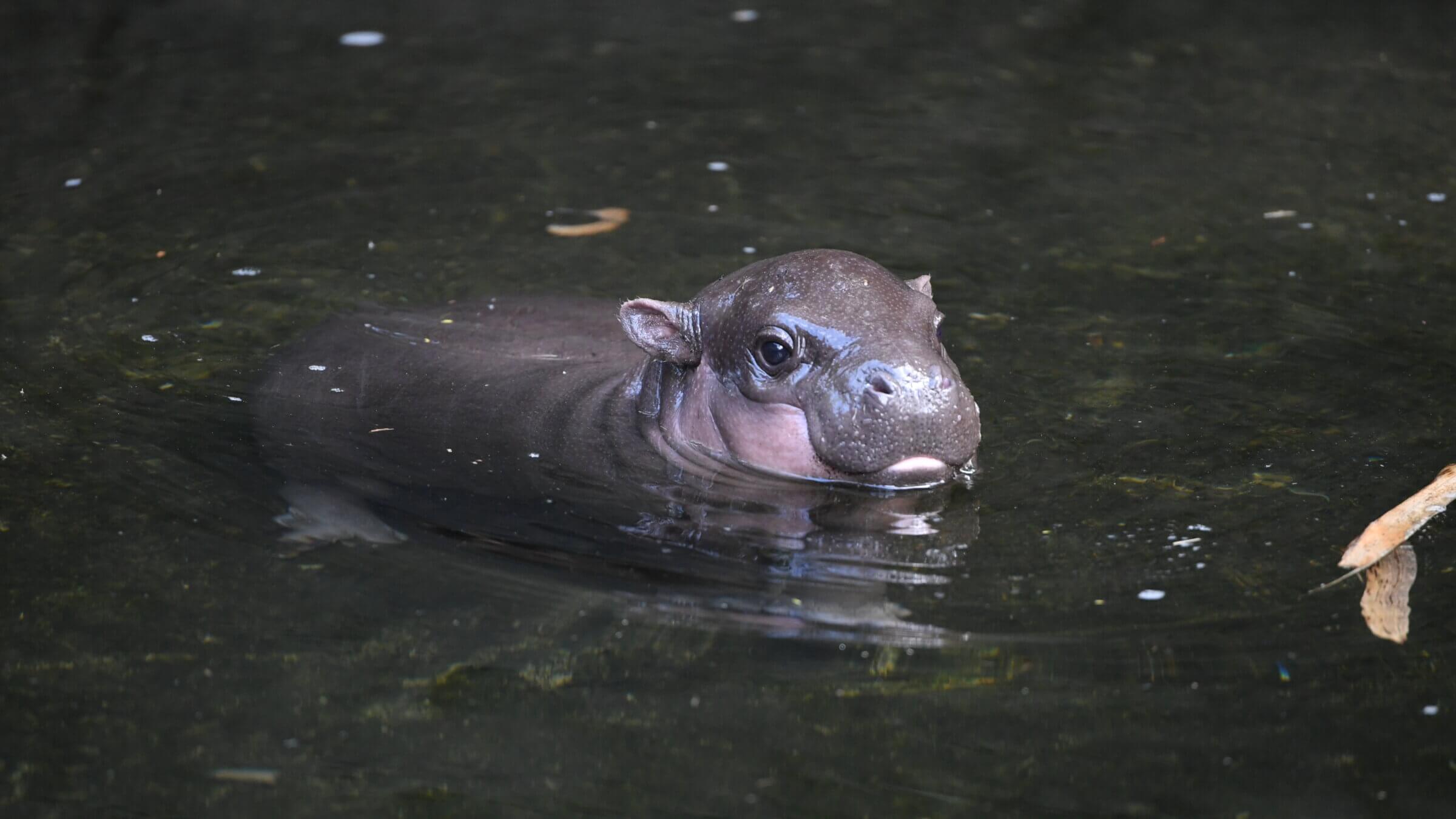Baby hippos look like potatoes — which is why this one is named Latke
The pygmy hippo calf was born during Hanukkah

A baby pygmy potato — er, hippo — in Sydney, Australia. Courtesy of Getty Images
Hanukkah may be months ago — in fact, it’s almost Purim — but a new baby hippo at the Tanganyika Wildlife Park outside Wichita, Kansas, was just named in honor of the holiday. Keepers dubbed the calf Latke because it was born Dec. 14, the last night of Hanukkah.
According to a TikTok, the name Latke was chosen because keepers kept referring to the roly-poly baby as a potato. He was only 13 pounds at birth, which is a big potato but a very small hippo — hippo calves usually weigh 50-100 pounds at birth.
Latke is a pygmy hippo, a subset of the hippo family with somewhat different behavior — they’re less aquatic — and a fully-grown weight of about 600 pounds, far smaller than a normal Nile hippopotamus male, which can reach 10,000 pounds.
Tanganyika maintains an active social media presence, and they’ve been posting tons of videos of Latke, including a clip of him yawning while wiggling his ears that has over 3 million views.
@tanganyikawildlifepark It’s the ear flutter for me 🥰🦛 #babyhippo #hippobaby #babyanimals #adorableanimals #foryou ♬ Blackbird - Acoustic Guitar Poet
Despite being vegetarian, full-sized hippos are extremely dangerous, accounting for about 500 human deaths each year throughout Africa. Their powerful jaws and giant, sharp teeth can crush their foes — even powerful adversaries like lions. And though they are approximately the shape of a marshmallow, they’re quite fast when they’re in the water, where they run along the bottom of rivers or lakes.
But pygmy hippos’ smaller size makes them more likely to flee predators than attack, unlike their larger cousins, and the species is more solitary than the Nile hippo, which tends to congregate in groups known as bloats. (Just like how one feels after eating too many latkes.)
While Nile hippos are considered a vulnerable species and have been pushed out of their habitats by humans and poachers, they are actually overpopulated in some areas — namely Colombia, where drug kingpin Pablo Escobar brought four for a menagerie in the 1980s; with no natural predators, they began to run rampant. Pygmies, on the other hand, are considered endangered, with only around 3,000 still in the wild, but they breed well in captivity.
Latke is Tanganyika’s fourth pygmy hippo calf, born to parents Posie and Pluto. At least one of the previous calves, Nessie, now resides in Arizona, at another wildlife park, where she has had a baby of her own.
Though Tanganyika prides itself on being an important part of pygmy hippo conservation efforts, it has also received criticism from animal welfare activists because the park allows its visitors to have direct contact with exotic animals.
A 2016 petition to amend animal welfare laws, backed by the Humane Society of the United States, the World Wildlife Foundation and International Fund for Animal Welfare, argued that some of Tanganyika’s activities, including its big cat breeding programs and lemur encounters, were inhumane. A lawsuit from PETA also alleged unethical animal sale and breeding, and the USDA cited the facility in 2021 for improper sale and transport of Eurasian Lynx kittens. In the past, the USDA has given the facility warnings about deteriorating animal feed and unsafe enclosures that allow for contact between visitors and the animals.
Jim Fouts, Tanganyika’s founder, has responded to past allegations that its wildlife encounters and breeding programs are inhumane, arguing that their facility is an important part of conservation, and noting that they have increased the worldwide managed population of cloud leopards by 15% as of 2016.
No one from the park replied to a request for comment before publication.
Tanganyika is currently offering a hippo petting and art experience with Latke when the park reopens after the winter. (The hippos apparently paint with their noses.) Latkes will not be provided to feed to Latke.















